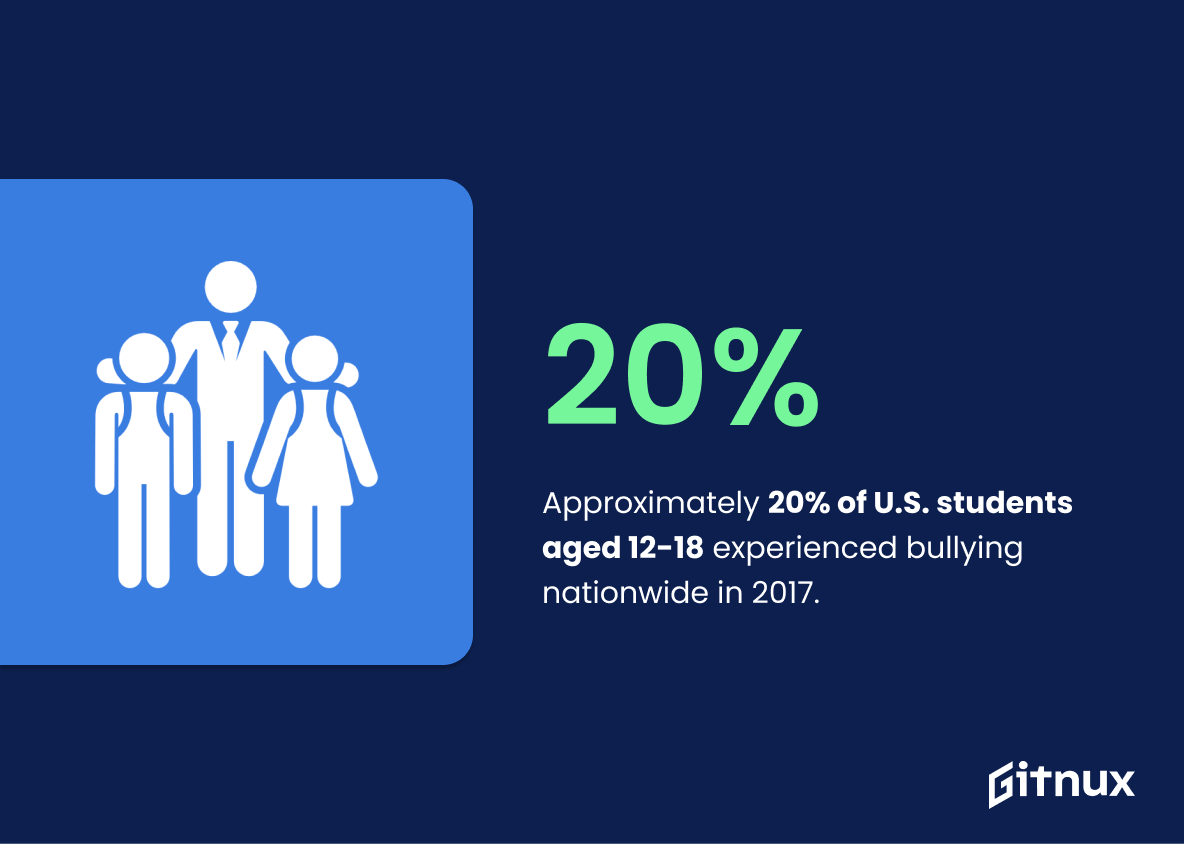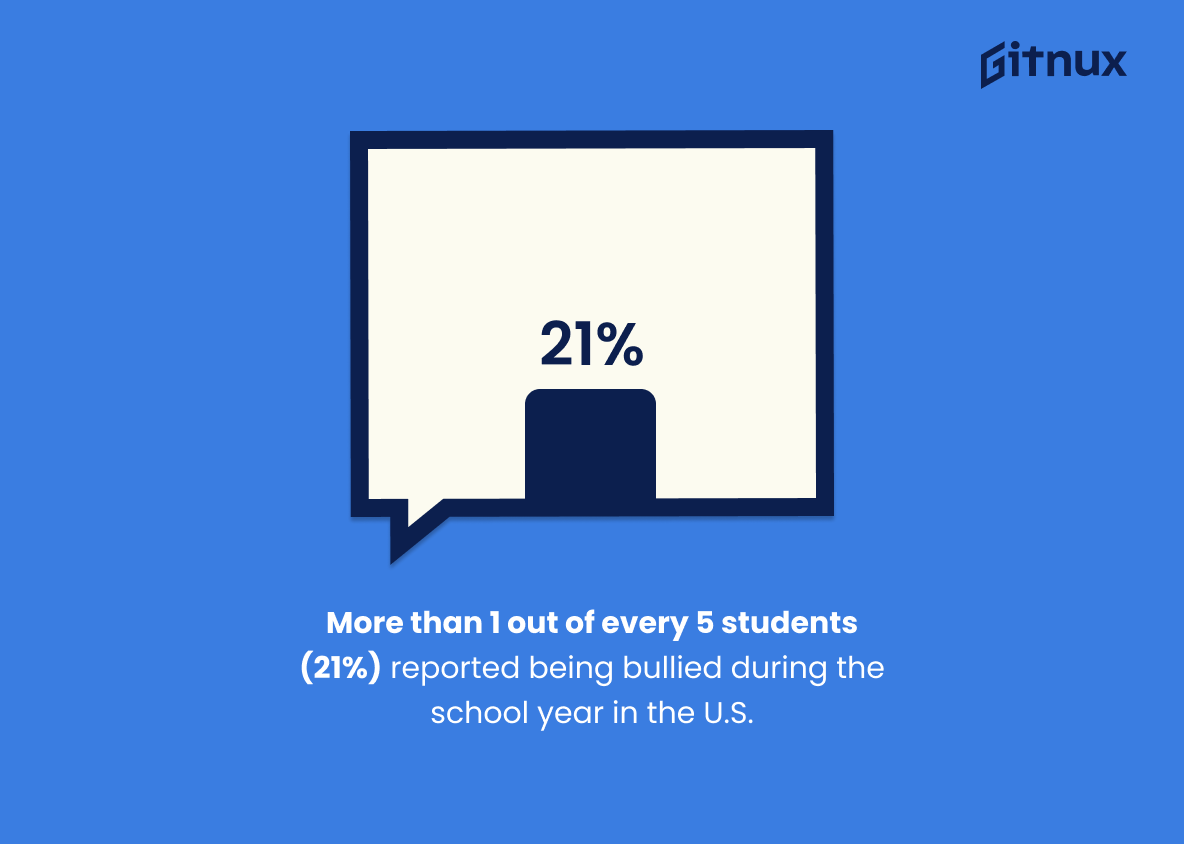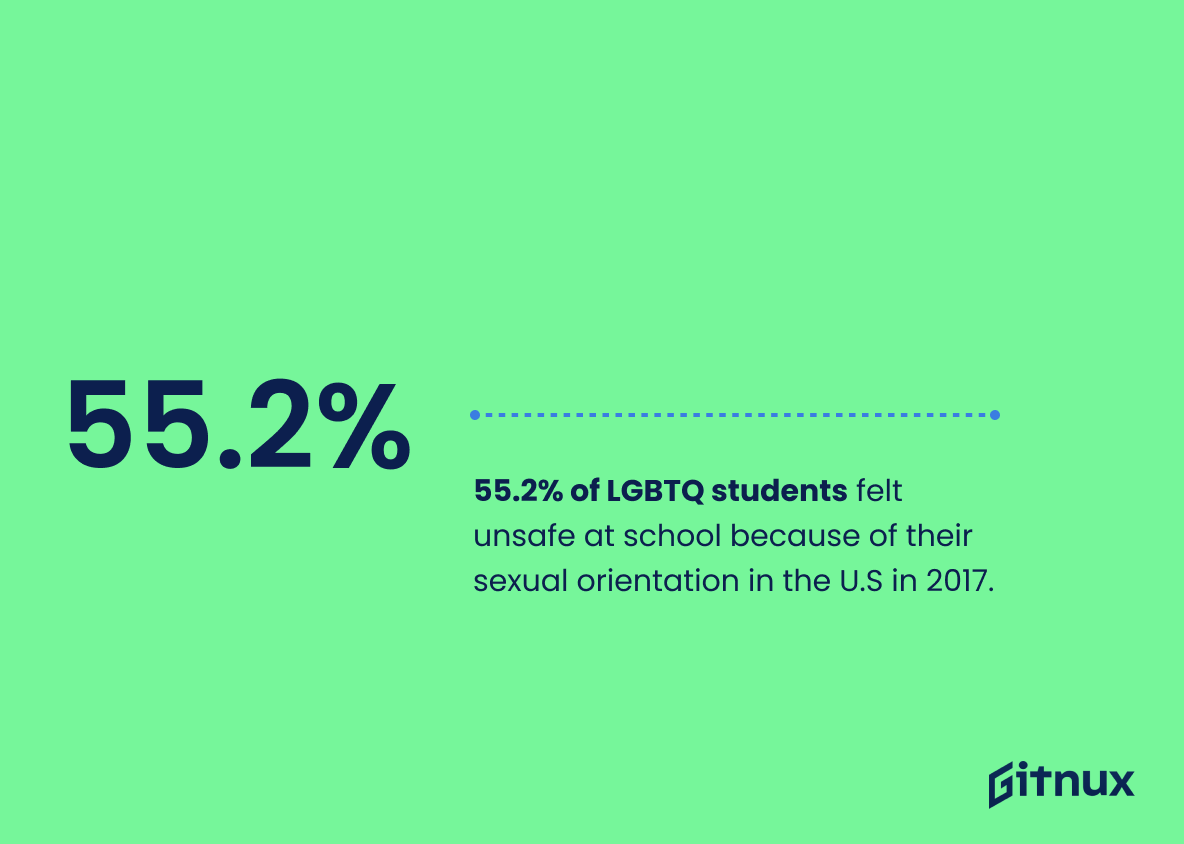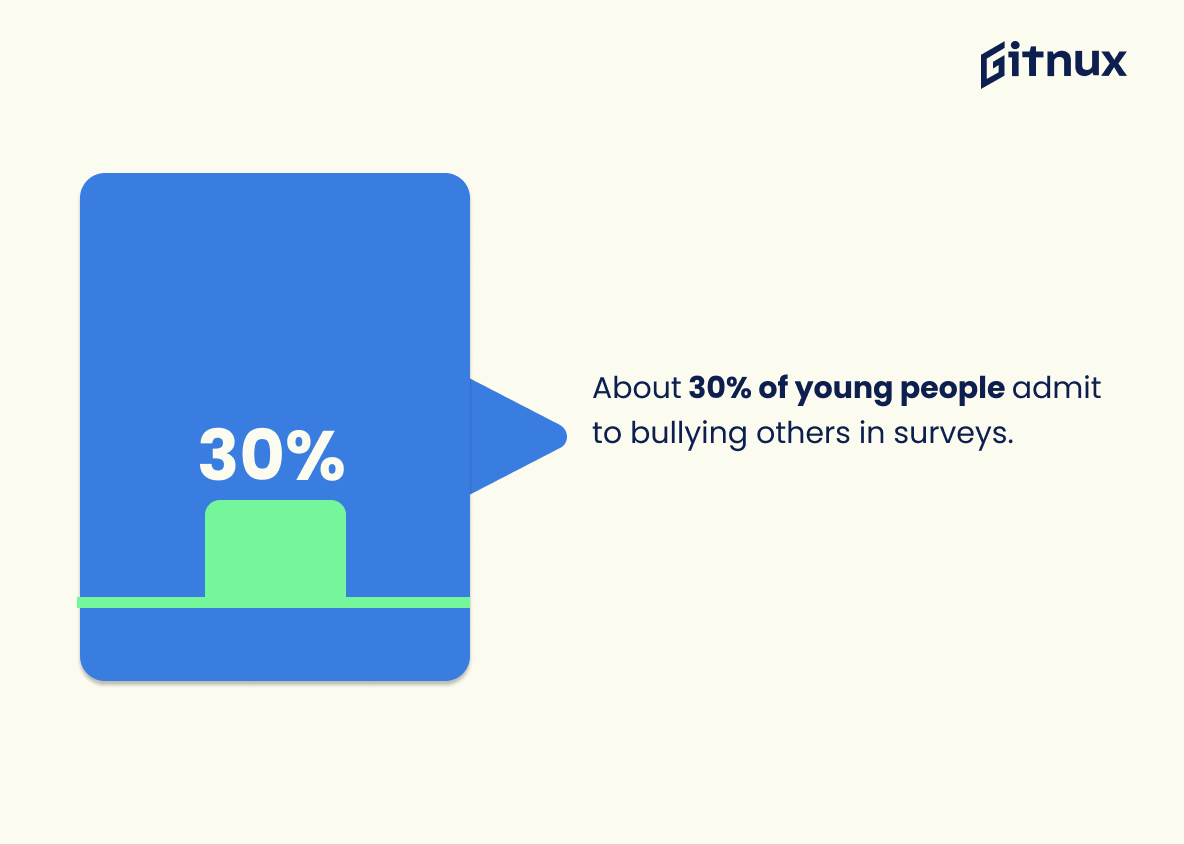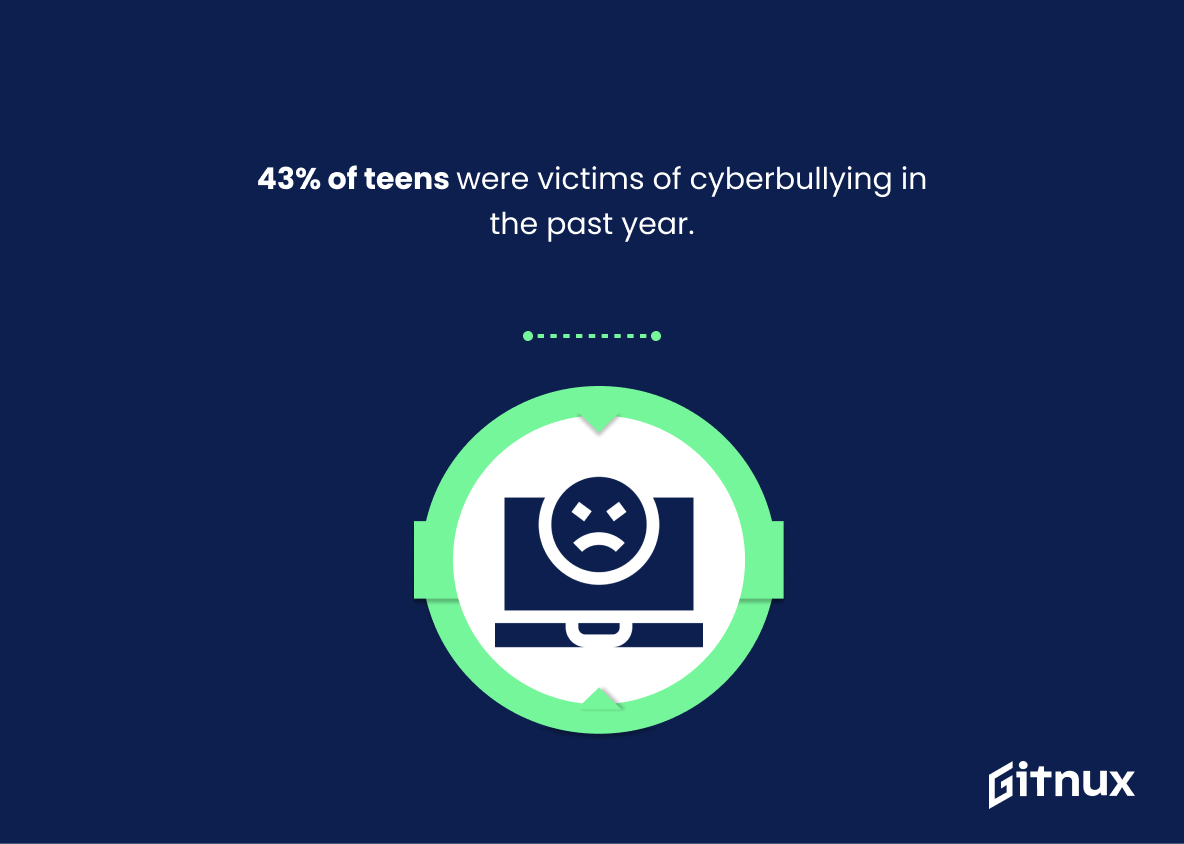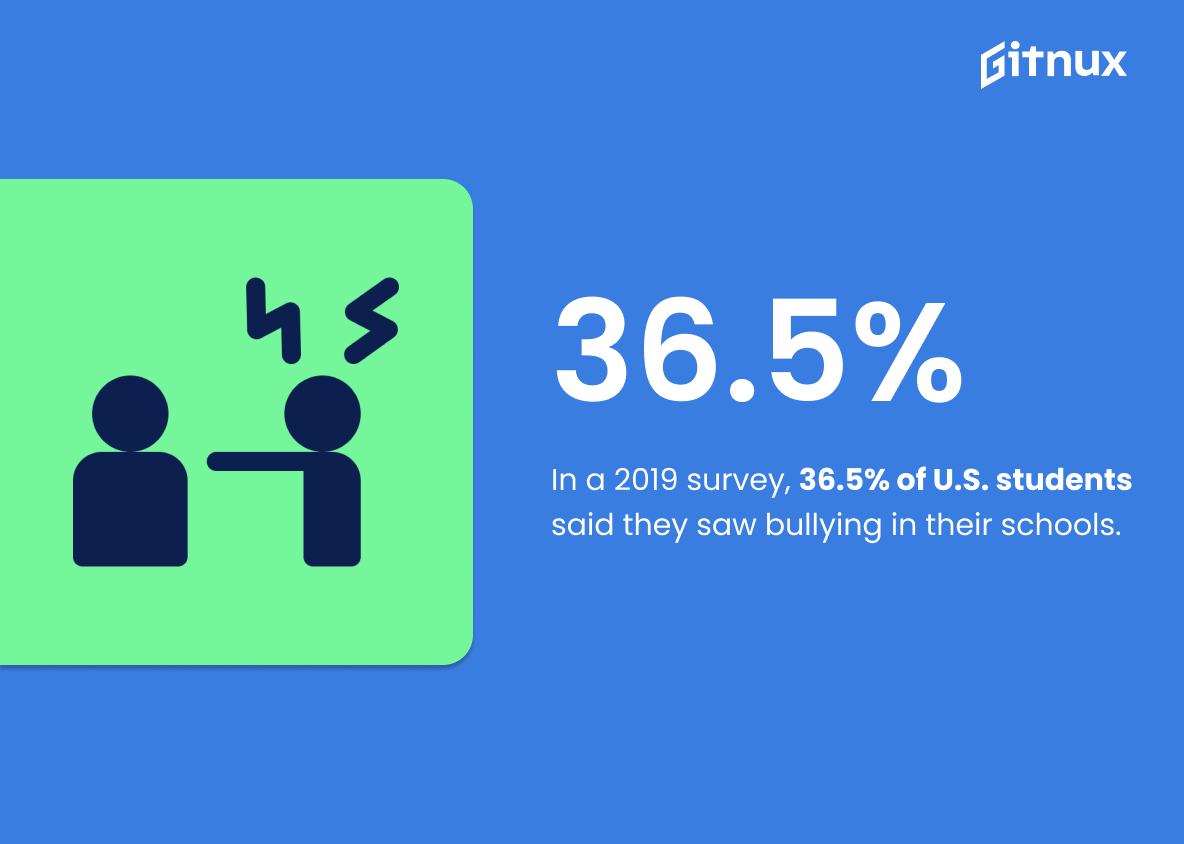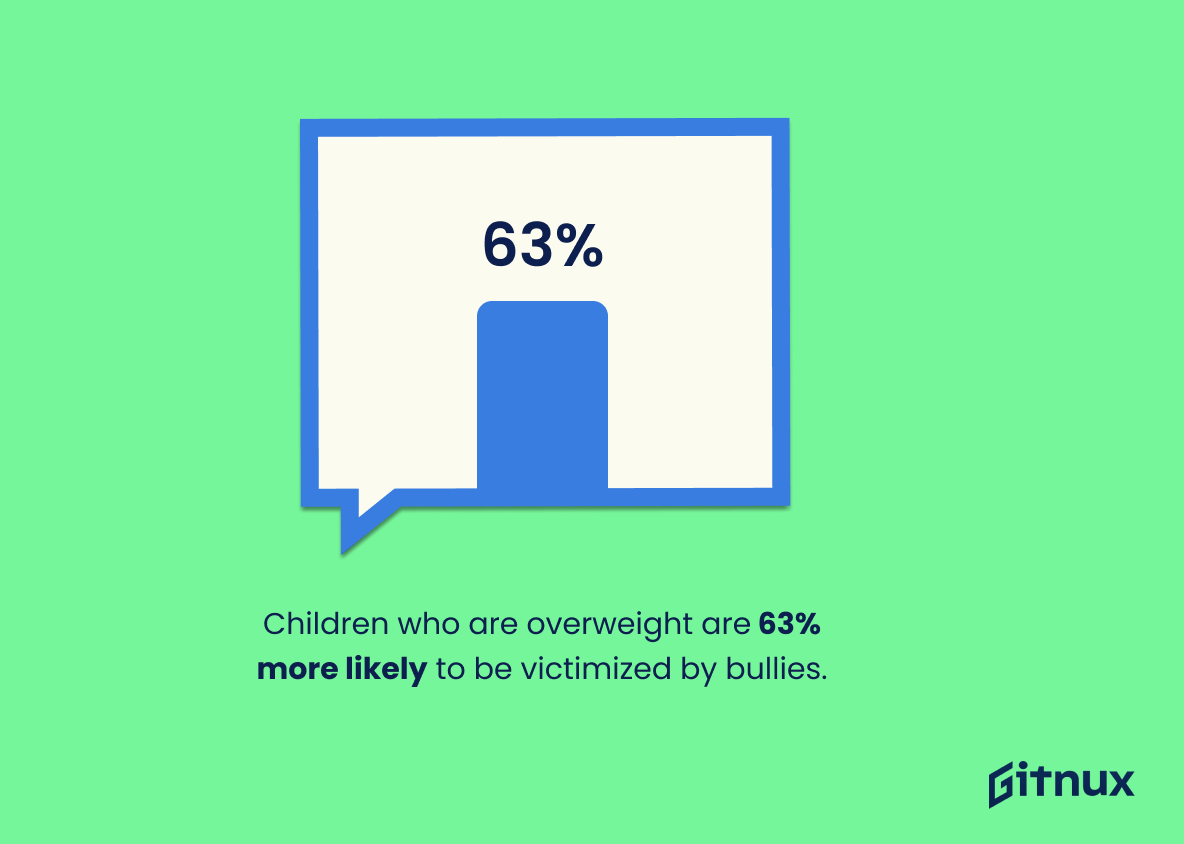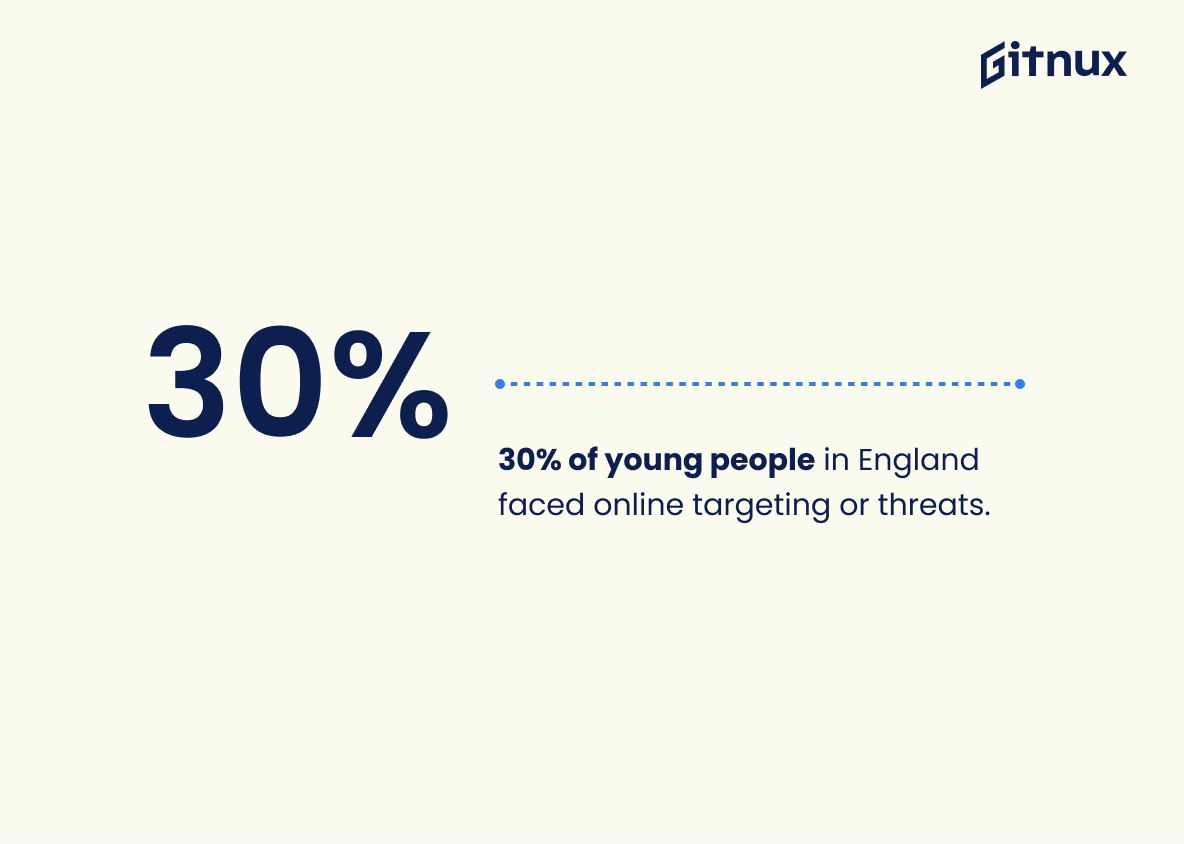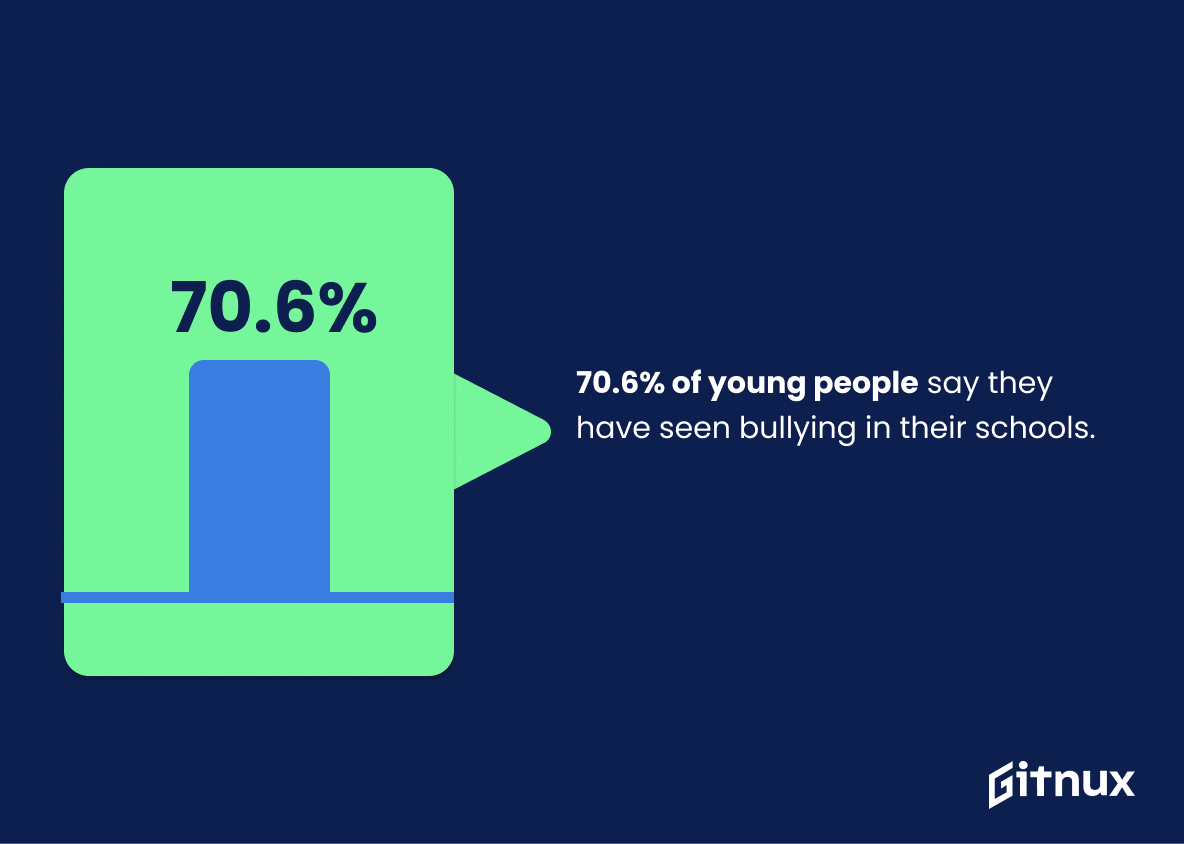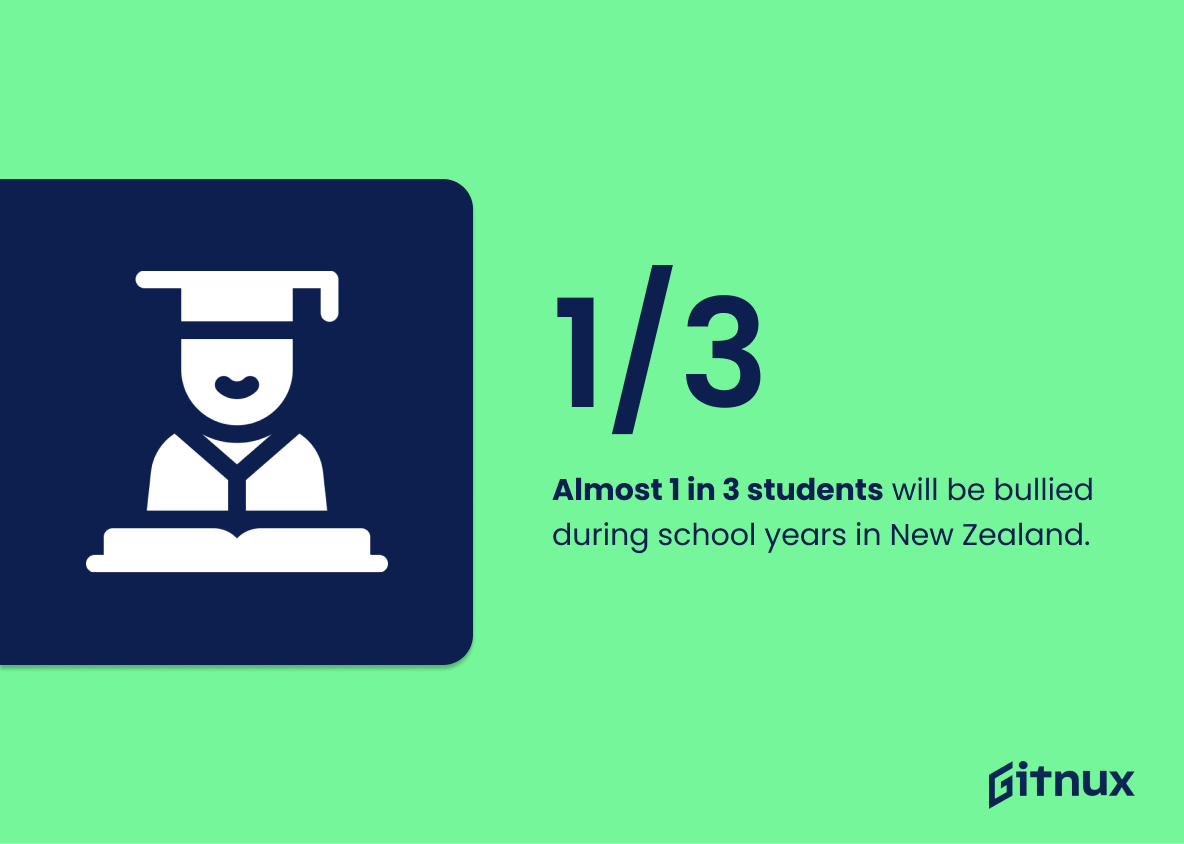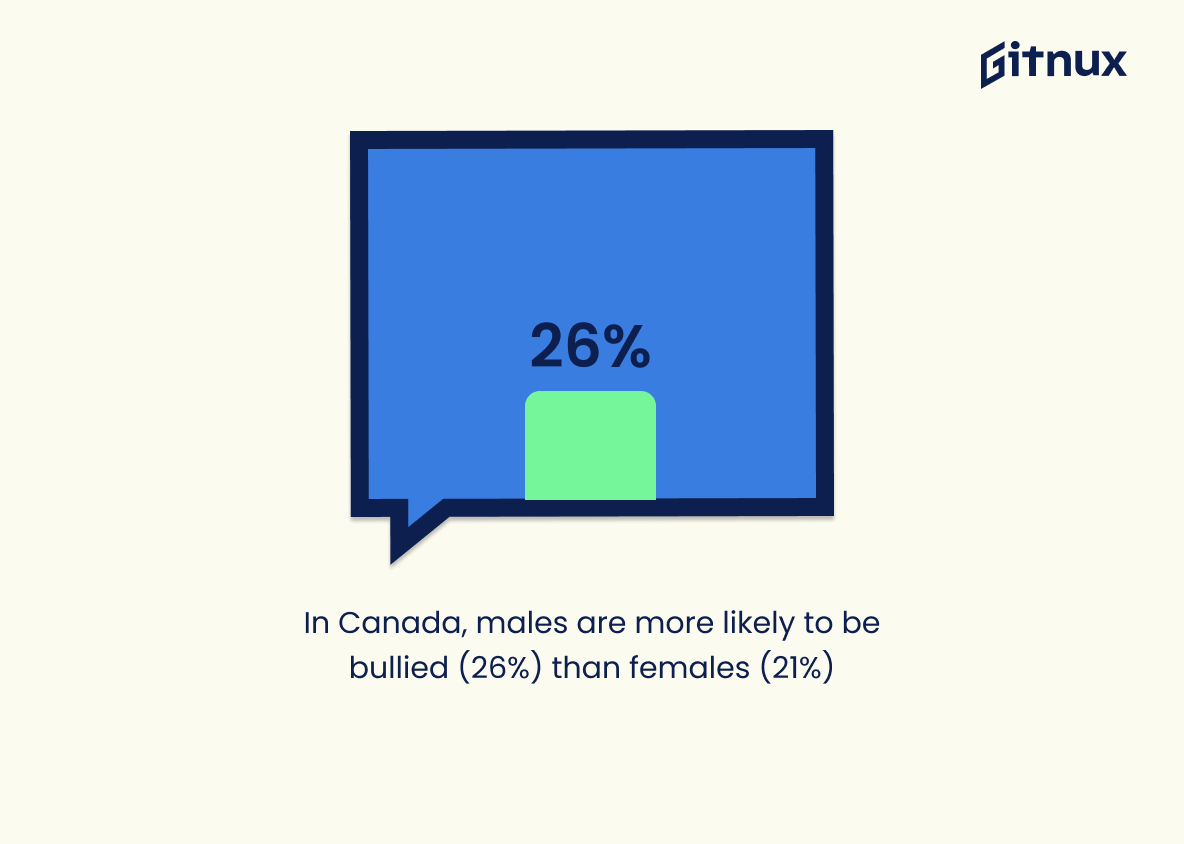In a world increasingly connected by digital links, the issue of bullying has vaulted onto a global stage, becoming more pervasive and challenging to tackle than ever before. Bullying, once a bitter reality confined within the walls of schools, has infiltrated various arenas of life, leaving a trail of emotional distress, anxiety, and negativity.
In this blog post, we delve deep into the alarming world of bullying statistics, casting light on the rising numbers and their profound impact on individuals and communities. We aim to go beyond just numbers, exploring the unsettling patterns below the surface, and fostering a greater understanding of this pressing issue among readers. Join us, as we unravel a sobering phenomenon in an attempt to steer conversations towards finding effective, lasting solutions.
The Latest Bullying Statistics Unveiled
Approximately 20% of U.S. students aged 12-18 experienced bullying nationwide in 2017.
With every fifth student in the U.S between ages 12 to 18 facing the brunt of bullying in 2017, punctuates the heart of the bullying trend, a nationwide concern that is distressingly real and widespread. In the backdrop of a piece about Bullying Statistics, this figures as a somber reminder of the magnitude of bullying that appears to have pervasively infiltrated into schools, affecting a significant portion of the American youth.
These numbers provide a tangible and unflinching look at the bullying landscape, measuring the breadth and scope of the problem and fueling the need for urgent, impactful solutions. The enormity of this statistic is a glaring call to arms, seeking immediate attention and action. It’s a clarion call for all stakeholders; parents, educators, policymakers and even the students, to join forces against this rapidly growing educational and societal issue.
More than 1 out of every 5 students (21%) reported being bullied during the school year in the U.S.
Within the panorama of bullying statistics portrayed in the blog post, these figures paint a stark image of the landscape of American schools. The data suggests that over a fifth of all U.S. students are entangled in the thorny bristles of bullying during the academic year.
This calls into focus the gravity of the situation, unmasking the widespread phenomena of schoolyard disturbing interactions, threatening not only the immediate academic performance but also the mental wellbeing and long-term life prospects of these young individuals. Recognizing that 21% of students are victims of bullying underscores the crucial need for more effective interventions, policies, and culture change to disrupt this alarming trend.
55.2% of LGBTQ students felt unsafe at school because of their sexual orientation in the U.S in 2017.
Painting the alarming reality of school environments, the statistic underscores a startling but rarely vocalized truth—more than half of LGBTQ students felt threatened at school due to their sexual orientation in the U.S in 2017. As a centerpiece in a blog post about Bullying Statistics, it not only embeds a human face to the numbers but also illustrates the detrimental impact of bullying on this vulnerable demographic.
This chilling statistic serves as a rallying cry for urgent reform, raising awareness and catalyzing action for safer and inclusive educational spaces. It is an irrefutable testament to the urgent need for substantial anti-bullying measures, support channels, education, and policies that protect and nurture every student, irrespective of their sexual orientation.
About 30% of young people admit to bullying others in surveys.
Gauging the insightful perspective of this statistical data, it unveils a striking revelation: almost one-third of our young generation confesses to being the instigator in bullying incidents, as reflected by surveys. In our exploration of bullying statistics for a blog post, this figure not only serves as an alarming wakeup call, but it also illuminates the broad reach of this issue, crossing paths within various age demographics.
It emphasizes the urgency of this social menace that needs addressing. Furthermore, it aids in guiding the conversation around strategies for bullying reduction and prevention, based on a factual platform rather than assumptions. This statistic, to a great degree, becomes the compass that directs our collective steps towards fostering a safer, inclusive environment for all.
43% of teens were victims of cyberbullying in the past year.
In the arena of bullying statistics, the digital realm can’t be ignored. The fact that 43% of teens have been cyberbullied within the past year is a glaring beacon flashing on the radar of our collective social consciousness. It holds a mirror up to modern society, drawing attention to the invasive influence of the digital age on our vulnerable younger generation.
This statistic not only underscores the pervasiveness of bullying beyond the physical world, but also serves as a wake-up call for parents, educators, and policymakers alike to recognize and combat the unseen impacts of bullying happening behind the safety of screens.
In a 2019 survey, 36.5% of U.S. students said they saw bullying in their schools.
Highlighting that a considerable 36.5% of U.S. students reported witnessing bullying in their schools in 2019 opens our eyes to the magnitude of this issue. It aptly illustrates the pervasiveness of bullying within the educational context, setting an undeniable backdrop for our discussion. Discussing this statistic not only conveys the enormity of the problem but also underscores the urgency in finding sustainable solutions.
This figure is not simply a percentage; it’s a cry for attention and action from over a third of our student population affected by bullying in some form. When we grasp this, we move a step closer to creating healthier and safer environments for our future generations.
Children who are overweight are 63% more likely to be victimized by bullies.
Painting the landscape of bullying can be a complex matter. The statistic, representing the almost doubled bully victimization likelihood for overweight children, provides a crucial piece of this picture puzzle. The intertwining of weight and bullying acts as a beacon, spotlighting an inkling of the deep biases ingrained in society, even among the youngest individuals.
It’s not just another number; it’s a lens focused on the silent sufferings of a sizable portion of children—63% more likely to experience the torment of their peers—a signal that echoes the urgency for action. The ripples of this statistic, in our blog post on Bullying Statistics, casts necessary light on the profound impact of physical appearance on bullying, while evoking dialogue and encouraging interventions designed for overweight children who are braving through this battleground.
30% of young people in England had been deliberately targeted, threatened or humiliated by an individual or group through the use of mobile phones or the internet.
Given the digital age we live in, this statistic underscores a dire reality; almost a third of England’s youth have found themselves victim to defacement and threats delivered via mobile devices or the internet. This numeric story begins to fill out a portrait of the bullying landscape, as it’s no longer simply confined to physical or verbal forms in playground.
As bullies have taken to digital platforms, they’ve created a new category of damage – cyberbullying. This statistic allows us to grasp the scale of this problem, especially in the context of a blog focused on bullying. Understanding this, we can initiate discussions that promote awareness, preventative measures, and solutions to address this growing concern in England, and perhaps beyond.
70.6% of young people say they have seen bullying in their schools.
Shining light on the pervasiveness of bullying in educational institutions, an alarming 70.6% of the young generation narrate their firsthand experience of witnessing such incidents within their schools. These numbers serve as a stark reminder in the discourse on bullying statistics – they undeniably nuance the dialogue by illustrating a dramatic vista: schools, the supposed safe grounds of learning, are being tainted with the unsettling tides of bullying.
Their stories, silently echoed in this percentage, unmasks a harsh reality which needs immediate attention and prompts the need for comprehensive interventions to ensure safer learning environments for our young minds.
In Australia, about 1 in 4 students (25%) has reported being bullied on a regular basis in the past six months.
Highlighting the gravity of the situation, the statistic sheds a glaring spotlight on the endemic proportions of bullying among Australian students. With a quarter of students reporting bullying instances within the last six months, it paints a chilling yet significant picture of the challenges children face at school. Crucially, it provides the hard evidence upon which a broader discussion about bullying can rest within our blog post.
It thrusts the issue into the limelight, prompting our readers to step back and reassess the actual dimension of the problem, break down stereotypes, and work towards more constructive and inclusive environments. Moreover, it underlines the formidable urgency to implement anti-bullying measures, galvanising policymakers, educators, and parents into immediate action.
Almost 1 in 3 students will be bullied during school years in New Zealand.
Diving into the depth of bullying in New Zealand, this datum presents a stark picture which mandates attention – imagine, a staggering proportion, nearly 1 in 3 students, are victims of bullying during their school journey. For those penning a blog post based on Bullying Statistics, this backbone figure is crucial as It throws a spotlight on the pervasiveness of this intimidating issue.
It helps readers put things in perspective, providing an eye-opening glance at the alarming frequency of these incidents. Demonstrating the magnitude of the problem creates a powerful call-to-action for all stakeholders involved – be it parents, teachers or policymakers. Through such outpouring data, we urge to instigate substantial conversations, that are need of the hour, for preventive strategies and robust solutions to mitigate bullying in New Zealand schools.
The statistic, therefore, is not merely a number, but a clarion call for change, a rallying point to ignite anti-bullying initiatives, and a starting block for creating safer, happier school environments.
In Canada, males are more likely to be bullied (26%) than females (21%)
Highlighting this difference in bullying prevalence by gender brings into focus the pressing need to address the seriousness of the issue among both genders, but particularly among males. This important insight underlines the vulnerability of males to bullying within the Canadian context.
It encourages readers to delve deeper into the root causes behind such behavior, and thus strategize for more effective interventions. The statistic furthermore points to a necessary re-evaluation of traditional assumptions about gender dynamics in bullying, possibly leading to more nuanced and inclusive prevention programs.
Conclusion
In summing up, bullying is a pervasive problem affecting millions of students worldwide. The statistics discussed reflect the urgency with which we need to address bullying in all its forms. It is essential for parents, educators, and policymakers to band together to cultivate safe and respectful environments where bullying is not tolerated, validate victims’ experiences, and provide resources for intervention and support.
Facing up to these troubling figures isn’t easy, but it’s the first step on the road to making a change. Let’s help shape a future where every child feels safe, valued, and equipped to face the challenges of life without the fear of being bullied. Together, we can change the statistics.
References
0. – https://www.www.kidshelpline.com.au
1. – https://www.jamanetwork.com
2. – https://www.www.dosomething.org
3. – https://www.www.stopbullying.gov
4. – https://www.www.cihr-irsc.gc.ca
5. – https://www.www.glsen.org
6. – https://www.www.youthtruthsurvey.org
7. – https://www.nces.ed.gov
8. – https://www.core.ac.uk
9. – https://www.www.bullyingfree.nz
